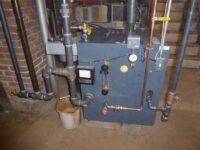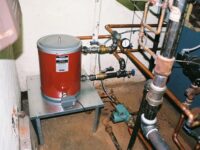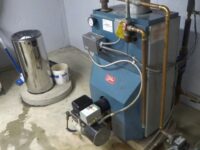A steam boiler is a vital component of many heating systems, playing a crucial role in providing warmth and comfort during the colder months. However, like any piece of equipment, steam boilers require regular maintenance to ensure optimal performance. One essential maintenance task is flushing the steam boiler. Flushing involves removing built-up sediment, minerals, and debris from within the boiler and its pipes. In this article, we will guide you through the process of How To Flush Steam Boiler, explaining its importance and the steps involved.
Understanding the Importance of Regular Flushing
Regularly flushing your steam boiler is akin to giving it a refreshing cleanse. Over time, sediment, minerals, and rust can accumulate within the boiler and its pipes. This buildup not only reduces the boiler’s efficiency but also increases the risk of corrosion and damage. Flushing helps prevent these issues, prolonging the boiler’s lifespan, enhancing its efficiency, and ensuring safe operation.
Signs That Your Steam Boiler Needs Flushing
Recognizing the signs that your steam boiler requires flushing is vital. Look out for indicators like reduced heating efficiency, uneven heat distribution, unusual noises, or a sudden increase in energy bills. These signs often suggest that sediment and mineral deposits are hindering the boiler’s performance. Flushing can address these issues and restore the boiler’s efficiency.
Safety Precautions Before Starting
Before embarking on the flushing process, prioritize safety. Ensure that the boiler is turned off and completely cooled down to prevent accidental burns. Additionally, gather the necessary personal protective equipment (PPE), such as gloves and safety glasses, to shield yourself from any potential hazards.

Gathering the Necessary Tools and Materials
To successfully flush a steam boiler, gather the required tools and materials. These may include a bucket, a hose, a pump, wrenches, a corrosion inhibitor, and a water source. Having everything ready before you start will streamline the process and prevent unnecessary delays.
Turning Off and Cooling Down the Boiler
Begin by turning off the power supply to the boiler. Give it ample time to cool down before proceeding with the flushing process. This step is crucial for your safety and prevents any potential mishaps due to hot surfaces.
Draining the Boiler: Step-by-Step Guide
Draining the boiler is a meticulous process that involves opening drain valves and allowing the accumulated water to flow out. Follow a step-by-step guide to ensure that the draining process is done correctly and efficiently.
Dealing with Pressure and Water Level
Before draining, it’s important to address the pressure and water level in the boiler. You’ll need to release excess pressure and ensure the water level is below the draining point to avoid potential accidents.

Emptying the Boiler Completely
Completely empty the boiler of its water content to prepare for the flushing process. This step requires patience and careful monitoring to ensure all water is properly drained.
Cleaning the Boiler’s Interior
Once the boiler is drained, it’s time to clean its interior. Remove any remaining debris, sediment, and mineral buildup using appropriate cleaning tools. This step sets the stage for improved efficiency and performance.
Addressing Stubborn Mineral Deposits
Stubborn mineral deposits can be challenging to remove. Learn effective methods to tackle these deposits and ensure your boiler’s optimal functioning.
Flushing the Boiler’s Pipes and Radiators
The flushing process isn’t limited to the boiler itself. Radiators and pipes can also accumulate sediment and debris. Discover how to effectively flush these components to maintain a well-functioning heating system.
Refilling the Boiler with Fresh Water
After cleaning and flushing, refill the boiler with fresh water. Proper refilling is essential to ensure the boiler operates smoothly and efficiently.

Bleeding Radiators to Remove Air Pockets
Air pockets within radiators can hinder heat distribution. Learn how to bleed radiators properly to remove these air pockets and restore balanced heating.
Adding Corrosion Inhibitor to the Water
To prevent future corrosion and buildup, consider adding a corrosion inhibitor to the water. This simple step can significantly extend the lifespan of your boiler.
Checking for Leaks and Proper Sealing
Before restarting the boiler, carefully inspect it for any leaks or issues. Proper sealing is crucial to avoid water wastage and potential damage.
Restarting the Boiler Carefully
Restarting the boiler after flushing requires a systematic approach to ensure its safe and efficient operation.
Monitoring the Boiler’s Performance Post-Flushing
After flushing, monitor the boiler’s performance closely. Observe improvements in heating efficiency and overall system operation.
Establishing a Maintenance Schedule
Regular maintenance, including flushing, should be part of a well-established schedule. Learn how to create and maintain an effective maintenance routine.
Professional Help: When to Consult Experts
While some maintenance tasks can be DIY, there are times when it’s best to consult professionals. Know when to seek expert help for complex boiler issues.
Conclusion: Benefits of Regular Steam Boiler Flushing
Regularly flushing your steam boiler offers numerous benefits, from improved efficiency to prolonged lifespan. Embracing this essential maintenance task can save you money, enhance comfort, and ensure safe operation.





